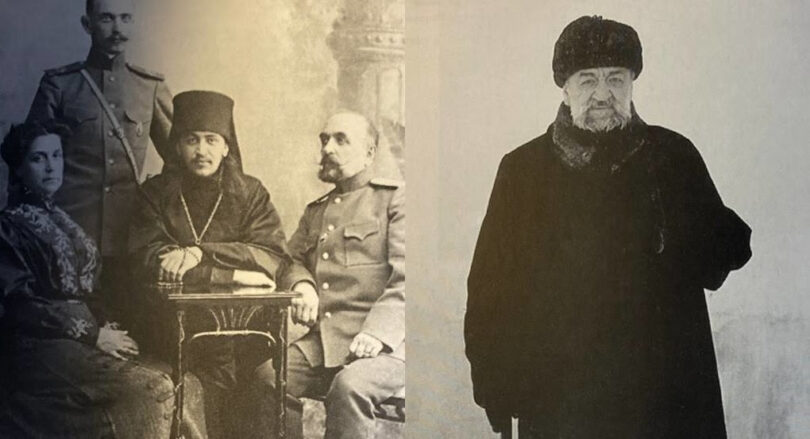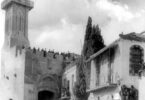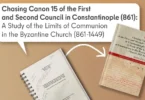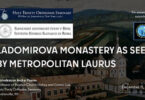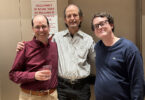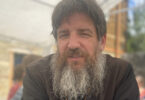Metropolitan Nestor (Anisimov) of Kirovograd and Nikolaev passed away on this day in 1962.
Vladyka Nestor lived an extraordinary life as a Russian bishop, one of the imperial Church, the Church in exile, and the Church in captivity. He was born in Viatka, in the North-eastern part of Russia. His mother was from a priestly family, and his father was a military officer. In 1907, Nikolai (his baptismal name) graduated from the Missionary Courses at Kazan Theological Academy. St. John of Kronstadt blessed Nikolai for missionary work, and the same year, Nikolai was tonsured a monk.
Kamchatka in the Russian Far East bordering Japan was the abandoned land of gold mining, hard labor prisoners, and military camps. The few clergy who ministered there did not have any formal spiritual education, and some suffered from alcoholism. Fr. Nestor did a lot to inform people in Russia about the dire conditions of Kamchatka’s residents. As a result, funds were collected around the Russian Empire, and volunteers went to Kamchatka to serve the local, primarily indigenous, population.
During World War I, Hegumen Nestor enlisted as a chaplain following the Russian soldiers in active combat. In October of 1916, Fr. Nestor was consecrated in Vladivostok as Bishop of Petropavlovsk, the second vicar of the diocese. Thus, he became the last bishop nominated by the decree of the Russian Emperor.
Bishop Nestor participated in the work of the All-Russian Council, which opened in Moscow on August 15, 1917. In October, Bishop Nestor participated in the delegation from the council appealing to the Bolshevik authorities to stop the bloodshed. He also wrote an account of the bombardment of Moscow’s Kremlin. In March 1918, Bishop Nestor was arrested (and later released) because of his involvement with the officers who plotted to set free the arrested royal family.
On assignment from Patriarch Tikhon, Bishop Nestor took part in the All-Ukrainian Council in Kiev in the summer of 1918. This council elected Metropolitan Anthony (Khrapovitskii) as the head of the Ukrainian autonomous Church.
In September 1919, Bishop Nestor became the chief of military clergy in the Siberian and Far Eastern Army of Admiral Kolchak, the supreme commander of the White Forces in Russia. In 1921, he arrived in Harbin. There, as before, he was actively involved in helping Russian refugees in need, especially their children. In 1927, Bishop Nestor established a House of Mercy (Dom Miloserdiia), where the future Metropolitan Philaret (Voznesenskii) and Archbishop Nathanael (Lʹvov) were tonsured as monks.
In July 1928, Metropolitan Sergii (Stragorodskii), Deputy Locum Tenens of the Patriarchal Throne, required the Russian bishops in China to express their loyalty to Soviet Russia. All bishops in China, except Bishop Nestor, refused to obey this decree. Bishop Nestor thereupon became a bishop of the Moscow Patriarchate under Metropolitan Sergii. At the same time, Bishop Nestor commemorated at the services Metropolitan Peter (Locum Tenens), Metropolitan Anthony (First Hierarch of the ROCOR), and Metropolitan Mefodii (the ROCOR ruling bishop in Harbin). In 1931, for joining Metropolitan Evlogii (Exarch of the Ecumenical Patriarchate in Europe), Bishop Nestor was temporarily suspended. However, when he returned to the ROCOR, Metropolitan Sergii suspended him in 1934.
In the following years, Bishop Nestor sustained a high level of activity:
-
participating in the work of the Russian Fascists;
-
supporting the Russian artist and philosopher Nicholas Roerich, who had moved to Harbin;
-
participating in dialogue with the Syrian Malabar Church in India.
During the Japanese occupation of Manchuria, Archbishop Nestor refused to let any Orthodox take part in rituals honoring an ancestor of the Royal House of Japan (according to Shintoism), the “goddess” Amaterasu Ōmikami. Priests Aleksandr Zhuch Theodore Bogoliubov and Priestmonk Pavel were killed by the Japanese for refusing to participate in this form of idolatry.
After the break in the war in 1943 and the election of Patriarch Sergii, Archbishop Nestor re-established contact with the Moscow Patriarchate through the Soviet Consulate in Harbin. In June 1945, he, the first among the ROCOR bishops in China, began to commemorate Patriarch Alexis I. In August 1945, Harbin was occupied by the Soviet Army, and arrests of Russian emigrants immediately began. In 1948, Metropolitan Nestor of Harbin and Manchuria was arrested by Chinese authorities in his apartment. He, along with several church workers, was sent to Chita and then to Moscow. In December of 1948, he was sentenced to five years of hard labor for his active anti-Soviet work in the past.
In ‘the correctional facility,” Metropolitan Nestor met other bishops, including Holy New Confessor Afanasii (Sakharov), Bishop of Kovrov. In 1956, Metropolitan Nestor was released. Initially, he served in Novosibirsk, where there were many people from Harbin, and then in Ukraine, in Kirovograd and Nikolaev, where he passed away in 1962.
Relevant Link:
Svetlana Azarova (Bakonina), “The Far Eastern Church District as an Alternative to the Supreme Church Administration Abroad (On the Closing Down of This Administration in 1922)”
Source:
Olga V. Kosik, Vernuvshiisia domoi: zhizneopisanie I sbornik trudov Mitropolita Nestora (Anisimova). [He Who Returned Home: Life and Collection of Metropolitan Nestor Anisimov’s Works] 1-2 (Moscow, 2005).

